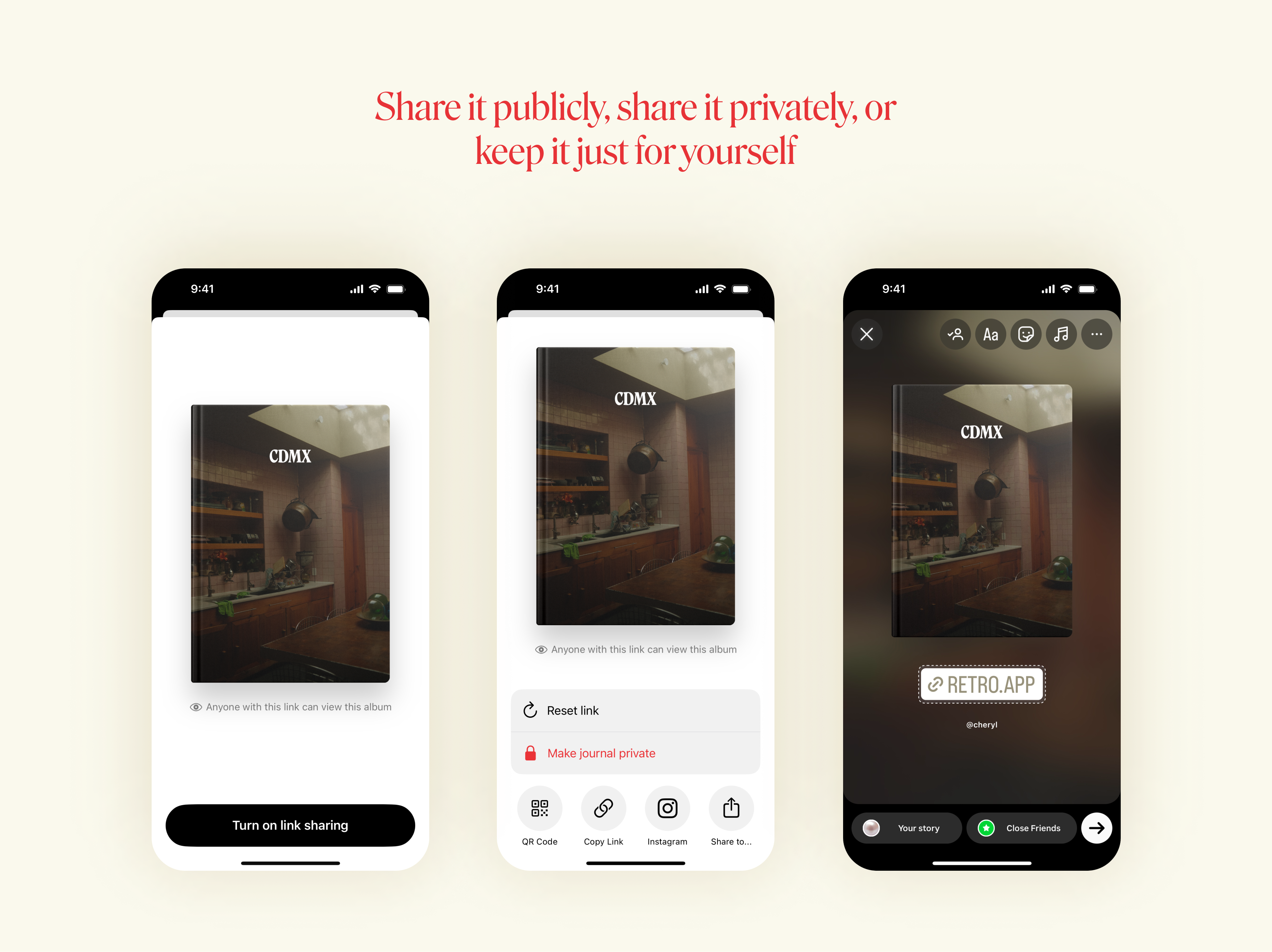As big social apps are optimizing for maximum engagement using algorithmic feeds and personalized content recommendations, Retro wants to go in the opposite direction: The company is launching a new feature called journals. It’s a flexible way to share photos with your favorite people and create visual records of whatever matters in your life. So the feature can be akin to a shared photo album or used to keep a private record.
Yes, I know. Photo-sharing isn’t new. Many have tried, most have failed. Even Marissa Mayer’s recent attempt — with an app called Sunshine — has raised questions. But it’s important to pay attention to Retro given the résumé of the founding team. The relatively new social app was created by Nathan Sharp and Ryan Olson, two former Instagram team members who played an important role in shipping breakthrough features such as Stories.
With its dedicated focus on photos and videos from your loved ones, Retro is progressively rolling out features that could quickly turn it into a must-have for long-distance friends, extended families and everyone who likes to carefully curate photos and pick the best ones from their camera roll.
Retro’s main feature is a way to share your most important photos of the past week with your favorite people. As you start adding photos, it creates a story of the week that your friends can check out. But that only works if your social graph is a perfect replica of the most important people in your life. Which is why people spend some quality time together and then just dump a bunch of photos in a WhatsApp group or iMessage thread.
Retro’s answer to this use case is journals: A new flexible way to share photos as a group. Co-founder and CEO Nathan Sharp compares the feature to a “photo-first WhatsApp group.”
Gunning for product-led growth
Retro, which launched last summer, is still fairly under the radar. It is well regarded by product designers who care about social mobile apps. But it hasn’t become a mainstream app. The startup is still shipping features in the hopes that it will unlock a “product-led growth engine,” as Sharp puts it.
“The first task right now is building the perfect product for catching up with family and friends. And then the second part is making sure that your family and friends can easily get on there. … I think journals are a big part of that,” he told TechCrunch. “You can’t really separate those two tasks as a social app but what you can do is focus on features that provide high utility for groups of people which bring them on.”
You can use journals to curate photos around a particular topic. For instance, you can have one family journal for each of your kids so that you can quickly and easily review earlier photos of them, free from the usual clutter of your photo library. It’s a way to foster that unique, individual bond.
You can also have a journal with your partner to share important moments you’ve spent together without spamming all your friends on Retro. Or you can create a journal for your recent weekend trip so that everyone can add and share photos without necessarily adding you as friend on the app.

Image Credits: Retro
“One of the favorite ones that I’ve made is for Valentine’s Day. I made one for my wife, which is just pictures of the two of us. And I went back, like, ten years — we’ve been together ten years,” said co-founder and CTO Ryan Olson. “Now when there’s a picture of the two of us, I just add it there. And it’s fun to have this sort of living thing for the two of us.”
Some people might even use journals for personal projects or hobbies. If you like woodworking, say, and want to track your progress, you could create a journal dedicated to furniture making with just you as the unique journal member.
“A photo journal is like a wonderful format for reviewing something, looking back, reflecting on something that kind of grows very subtly over time — but over long periods,” Sharp said.
The new feature could help build awareness of Retro if the startup can get people using journals during real-life events. Such as scenarios where an organizer might otherwise leave disposable cameras out on tables for guests to snap pics for pooling and sharing later.
“If you’re trying to gather photos at an event, we’ve created this very beautiful QR code that you can either save to your camera roll or print,” Sharp noted. “It’s very easy to just put a QR code and say ‘hey, if you’re at this dinner, share all your photos.’”
There’s also a viral aspect to this feature as journals can be shared outside Retro. In the app, you can generate a public link and share it on your Instagram Story or elsewhere online — there’s no need to install the app to view the photos. So some people might use it to share wedding pictures, for instance.
Building a social consumer app involves many experimentations — and journals are one of those experimentations. As people discover the app by clicking on public links for these shared albums it could, potentially, become Retro’s product-led growth engine. Only time will tell.
